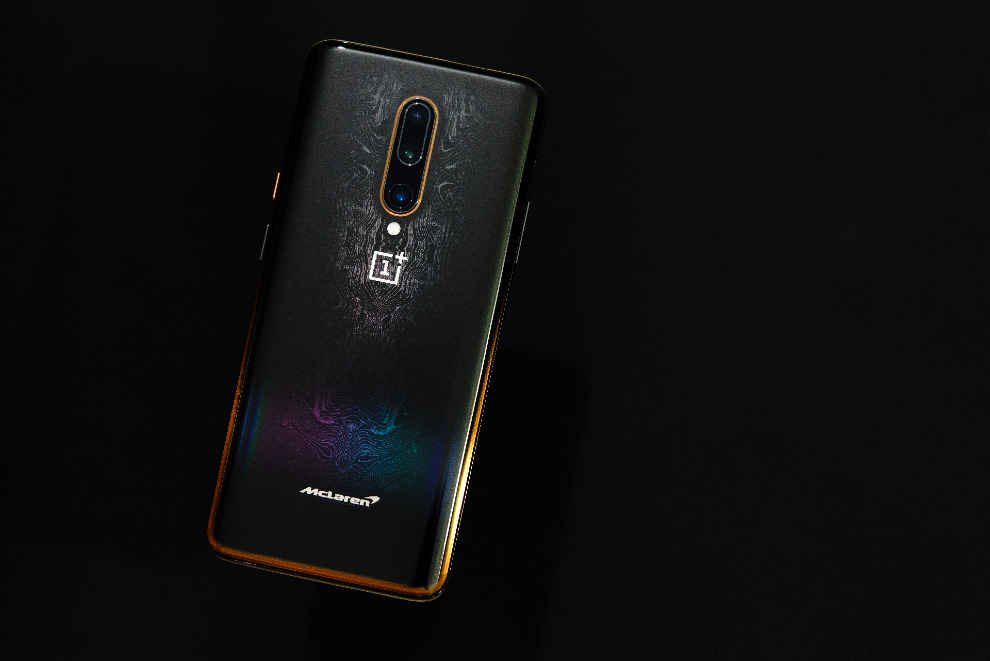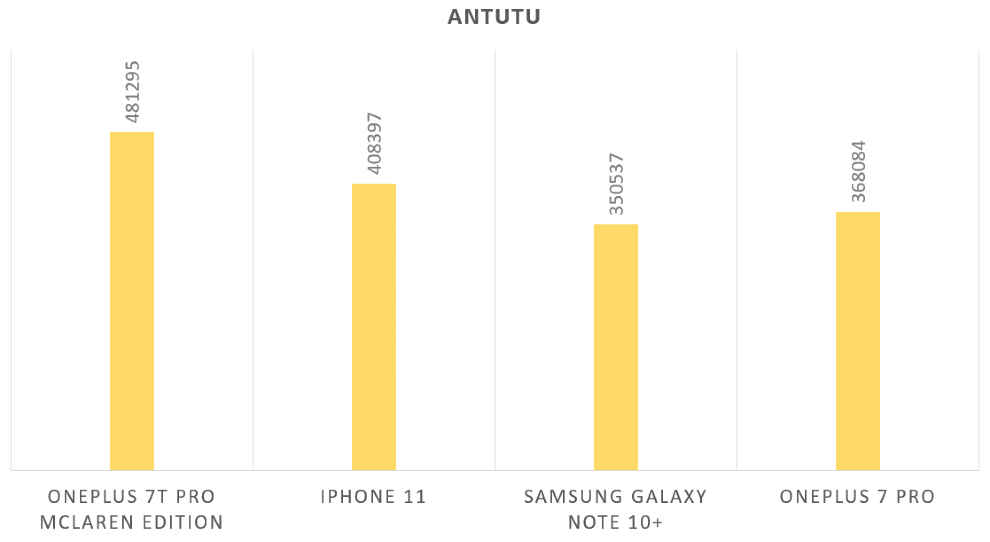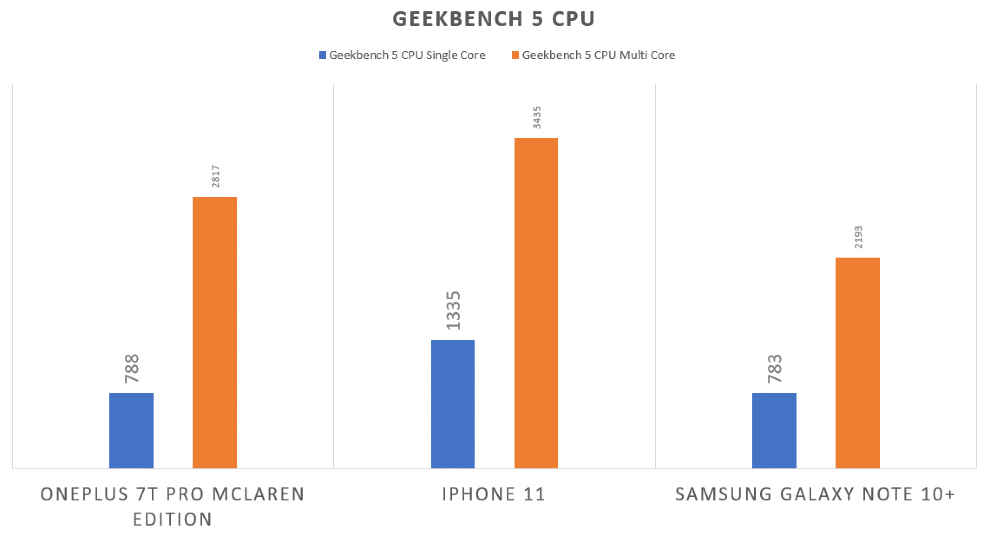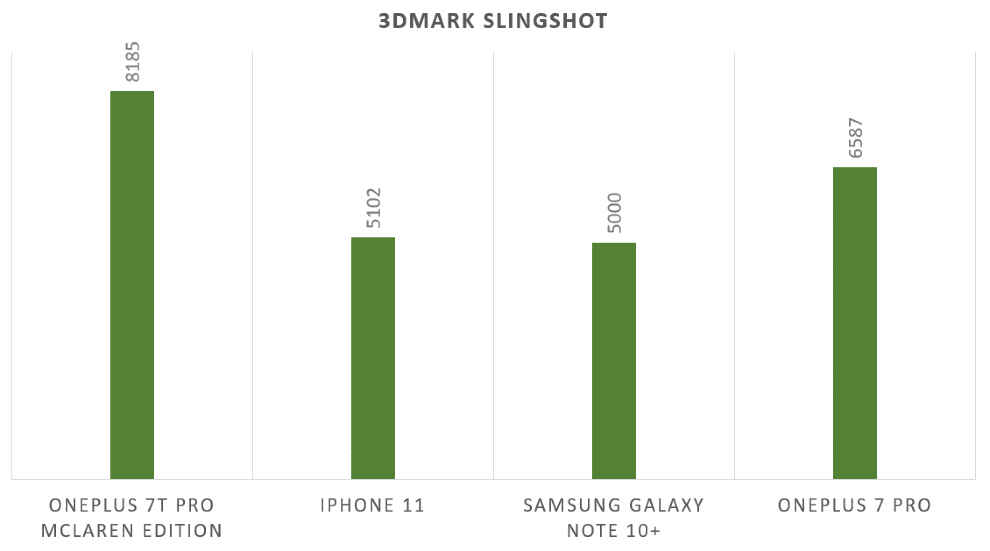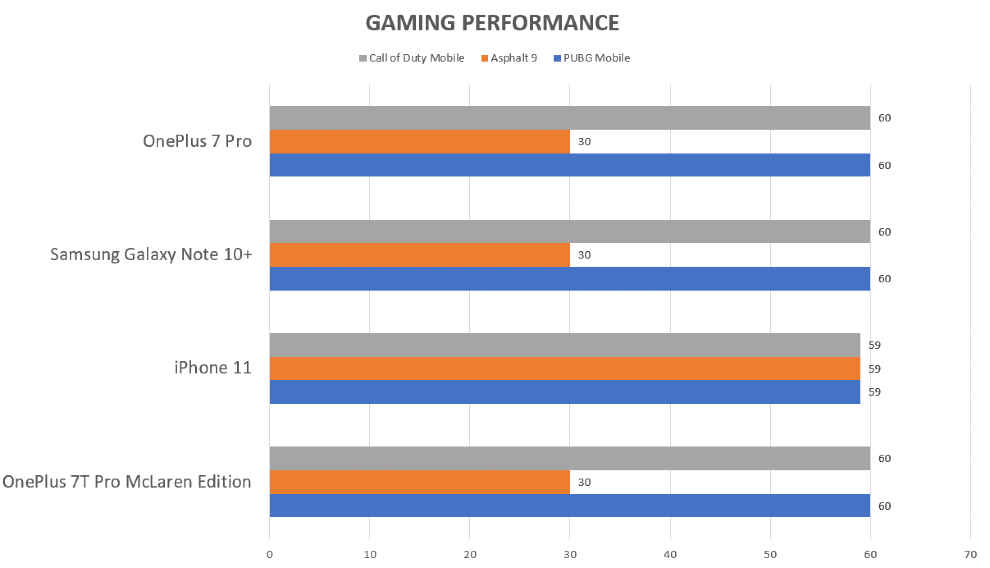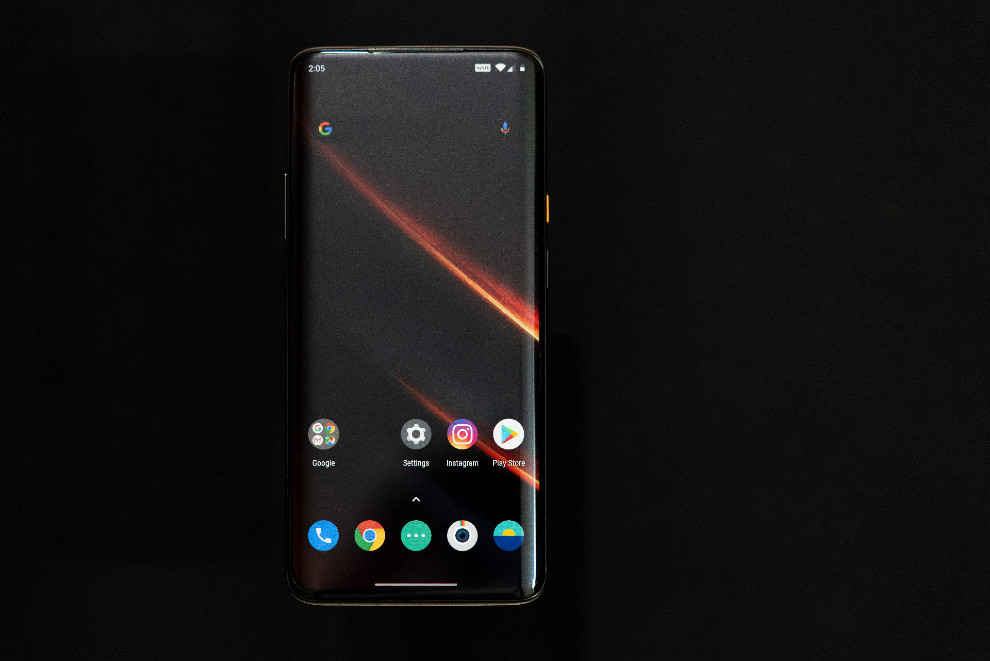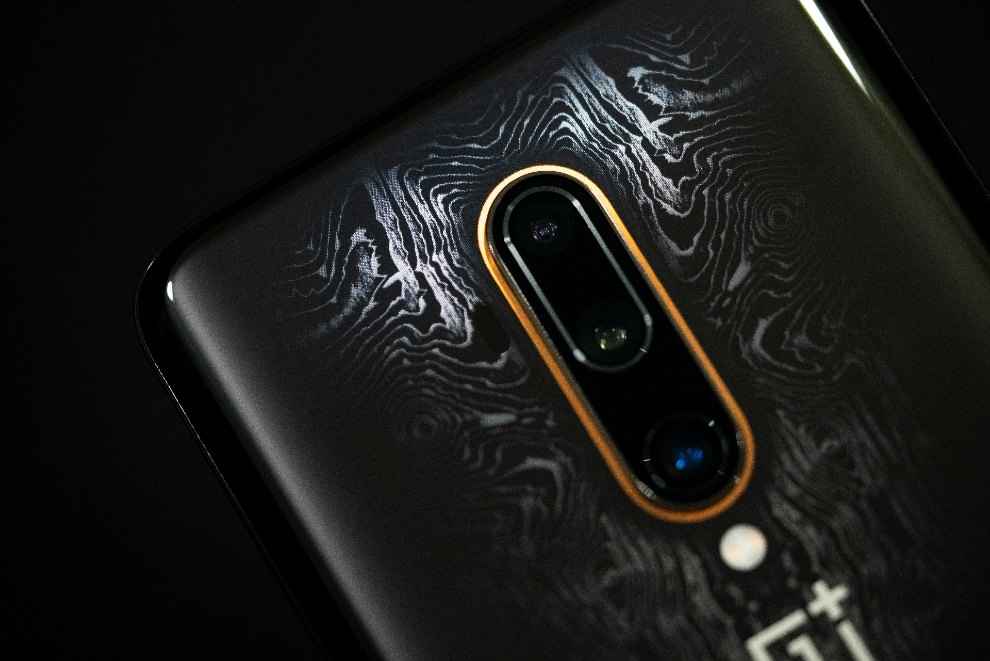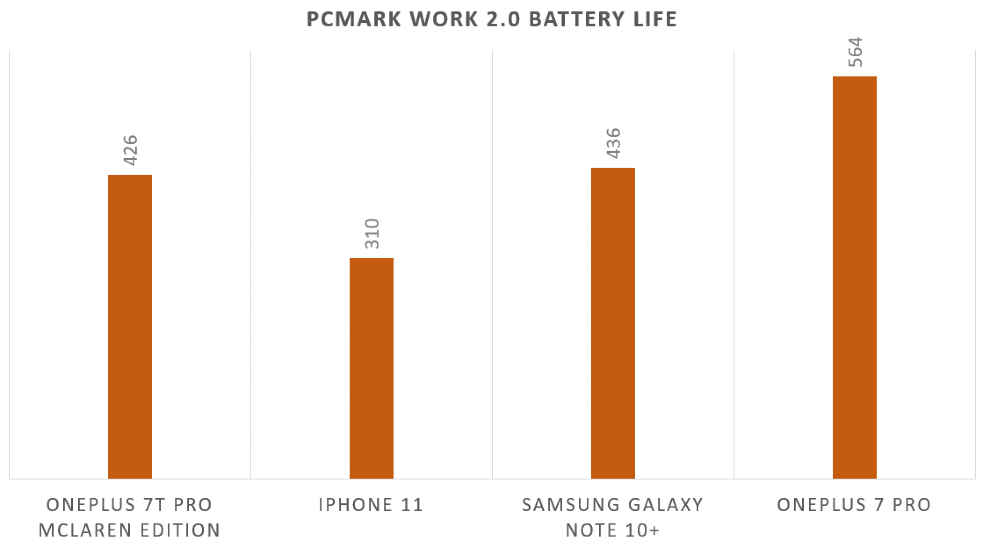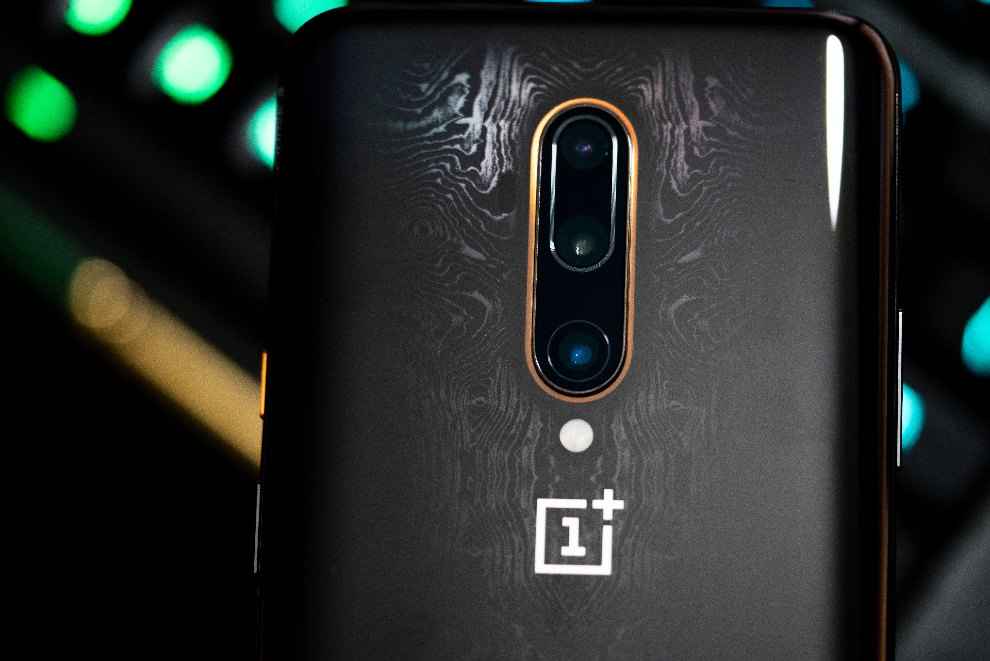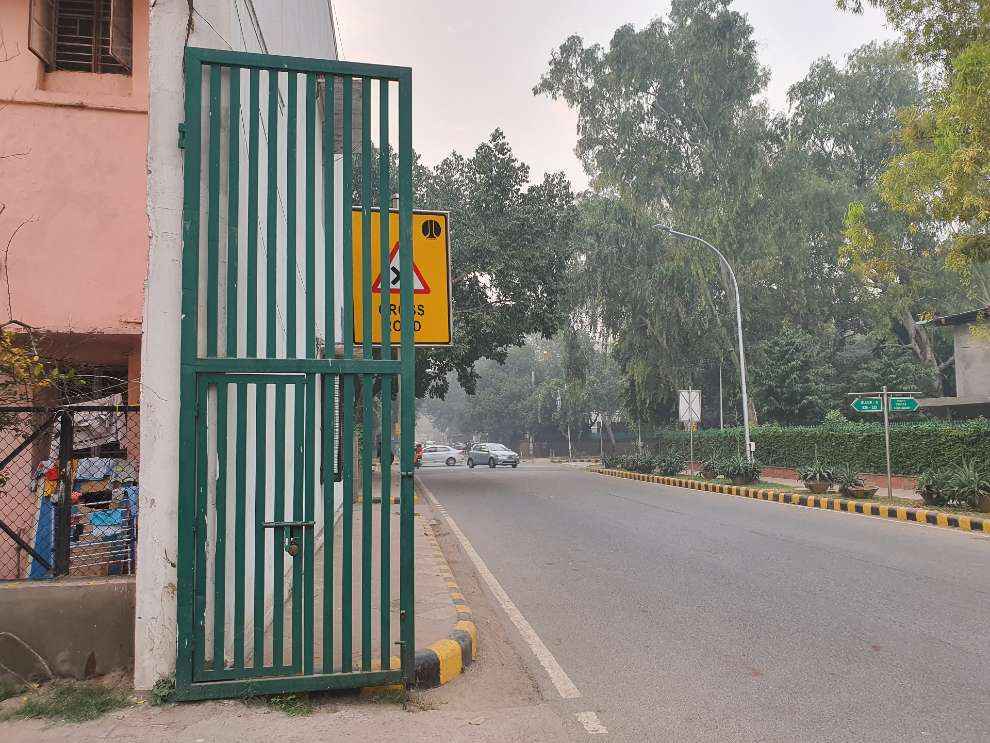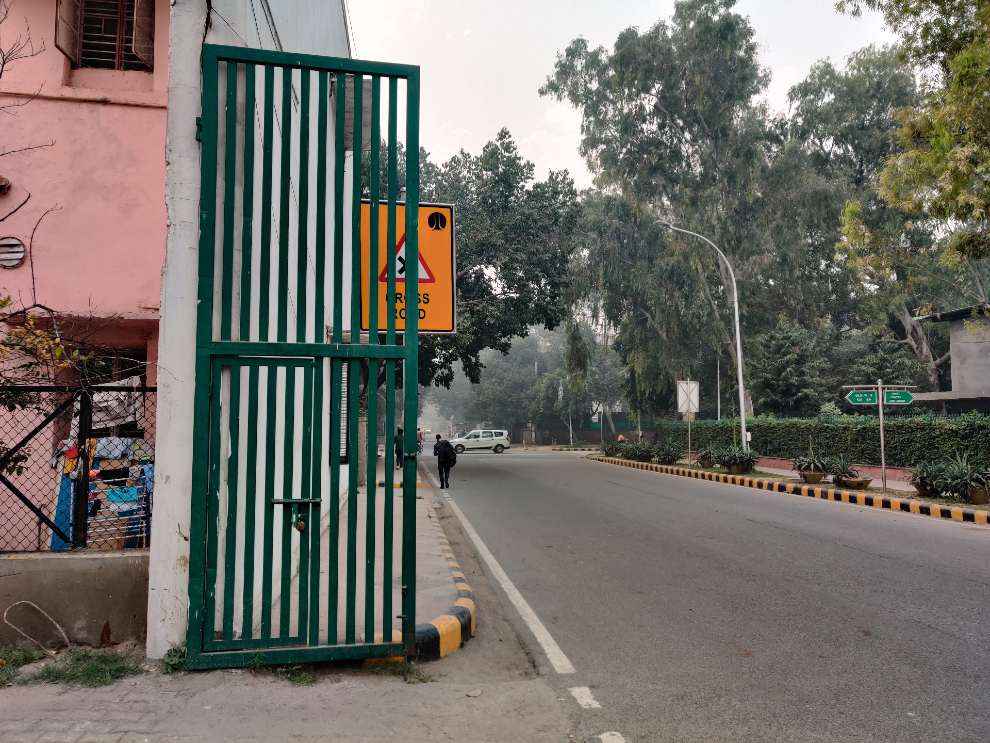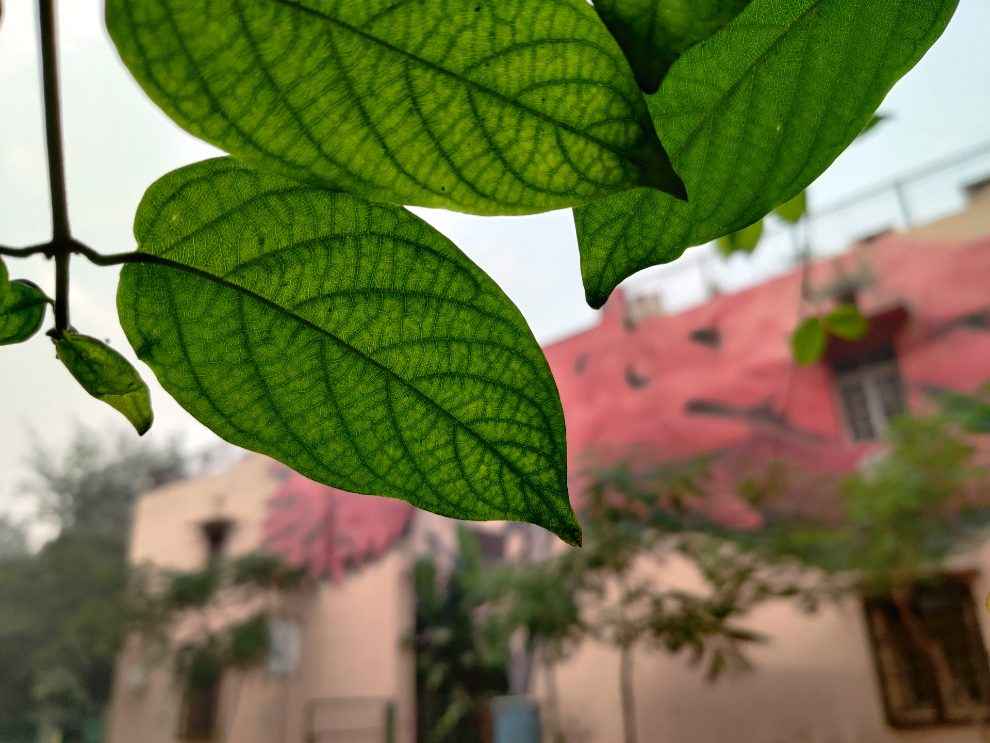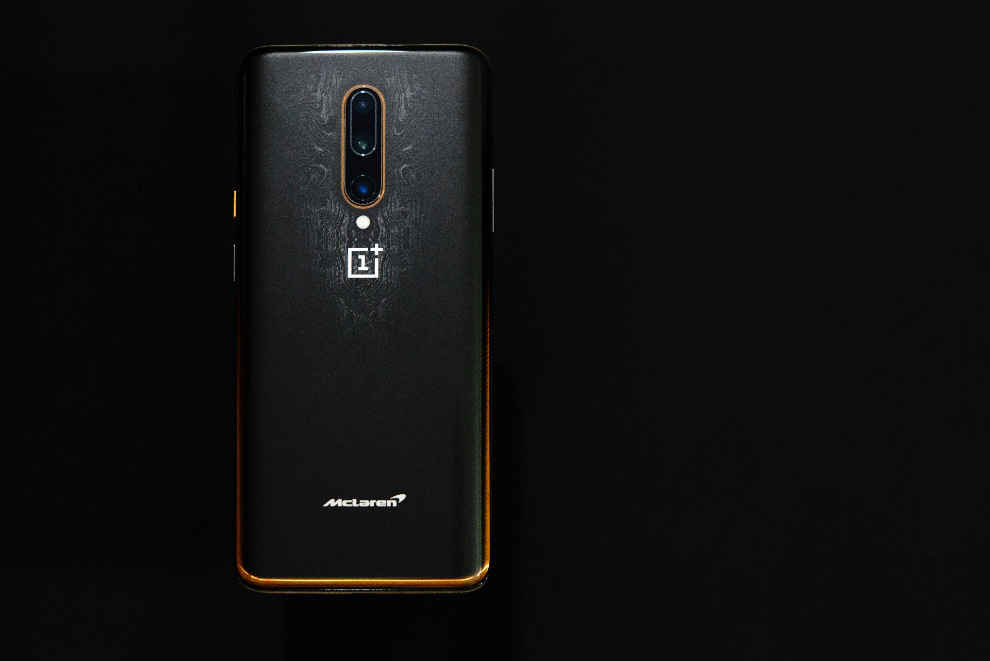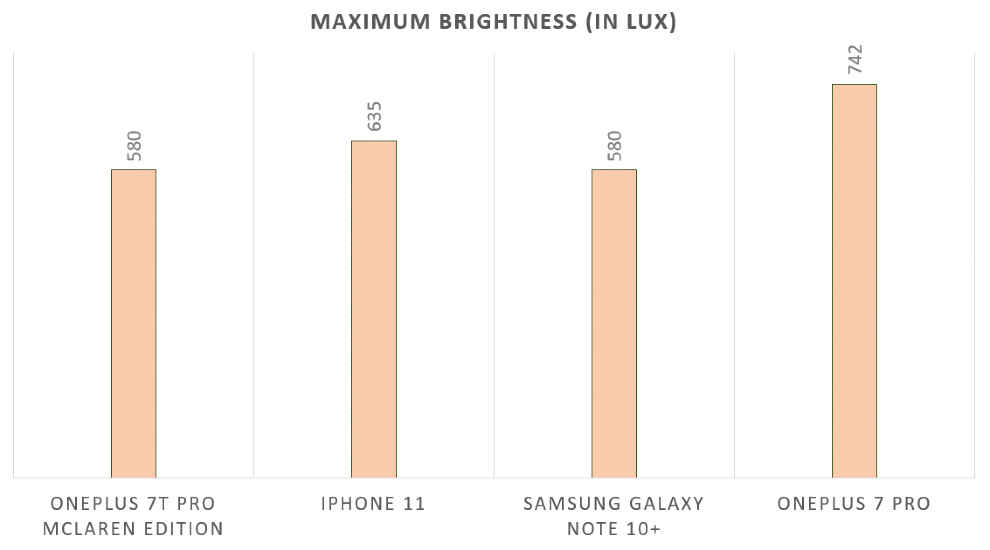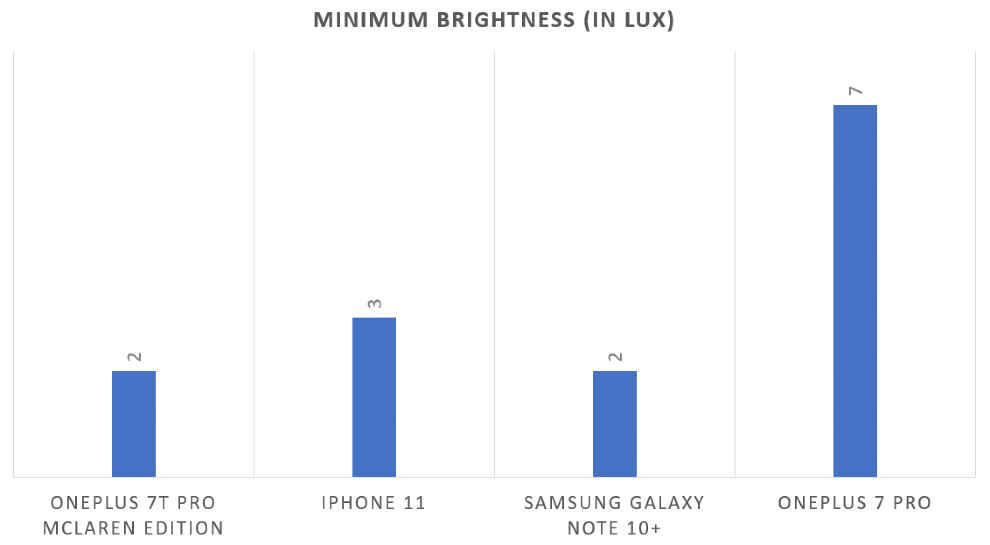OnePlus 7T Pro McLaren Edition Review : Fastest but not the most premium
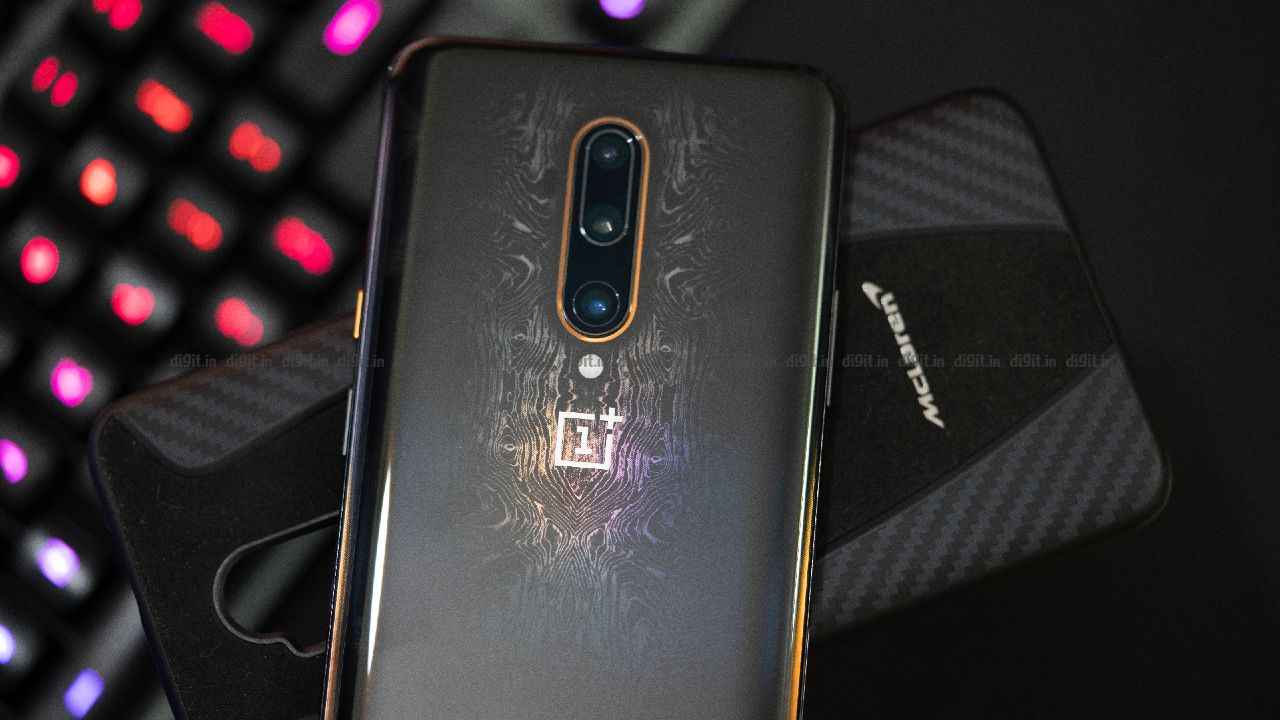
The OnePlus 7T Pro is indeed one of the fastest smartphones out there right now, but it’s not flawless. The flaws, in fact, are more or less acceptable if OnePlus was still operating in the value flagship segment, but this is a premium smartphone meant to take on the likes of the Galaxy Note 10+ and the Huawei P30 Pro. So it’s natural for us to compare the OnePlus 7T Pro with the best smartphones of this year. And in that regard, the OnePlus 7T Pro lacks a lot of features. Water resistance and wireless charging are two major misses, something that most smartphones priced Rs 60,000 offer. More than that, the phone has a penchant to overheat and has quite a few software bugs that are yet to be corrected.
The OnePlus 7 Pro was one of our favourite devices from earlier this year. The phone set a benchmark for other value flagships to follow suit, offering stellar performance, a fantastic display and an innovative design. The OnePlus 7T Pro that came a few months later retains almost all of that, and makes a few cursory changes. That includes the latest Snapdragon 855+, the only major upgrade that was anyway obvious, along with a few new software features. The rest of the package is nearly identical to the OnePlus 7 Pro. So is it really worth your money when the OnePlus 7 Pro is also available at a much cheaper price? Let’s find out —
Performance
Like every OnePlus device, the OnePlus 7T Pro is right at the bleeding edge of mobile computing, at least in the Android space. The Snapdragon 855+, which Qualcomm launched to help gaming phones set themselves apart, powers the flagship. The upgraded SoC offers a higher binned prime core clocked at 2.96GHz along with an overclocked Adreno 640 GPU which Qualcomm claims offers 15 percent better performance. That, combined with 12GB RAM and UFS 3.0 storage (up to 256GB), ensured the benchmark scores are one of the highest we have ever seen. You can see that in the charts below —
As the results show, the OnePlus 7T Pro is far ahead of its competition in the Android space. It even beat the latest iPhones in AnTuTu and 3DMark Slingshot indicating that the CPU and GPU are primed for high performance. Synthetic benchmarks taken into account, the OnePlus 7T Pro McLaren Edition is clearly the fastest Android smartphone this year.
More than benchmarks, using the smartphone itself gives the feeling that it’s hands down the fastest smartphone out right now. And that’s primarily because of the 90Hz refresh rate display. We will talk more about the panel later, but the higher refresh rate makes a big difference in the way you experience using the phone. The scrolling is far more responsive for one, and the animations look more realistic. Having said that, you won’t find much use of the 90Hz refresh rate outside of the UI. There are just a bunch of games that can run at 90FPS and most high-end games will be locked to 60 FPS. But looking at the pace mobile gaming is evolving, we might soon see 90FPS gaming on Android, and the OnePlus 7T Pro only becomes future-proof in that regard.
Speaking of gaming, the OnePlus 7T Pro is one mean gaming machine, marred only by the curved display. Games themselves run at their peak frame rates with nearly 100 percent stability, but it takes some time getting used to the curved panel. For one, the controls often tend to take up the curved part unless you manually set it otherwise. And touch response along the curved edges is weaker than the flat areas. And I did miss a few taps while playing CoD: Mobile on the OnePlus 7T Pro McLaren Edition. You can see the gaming stats in the charts below —
Clearly, the OnePlus 7T Pro is right at par with the rest of the flagships, at least in terms of performance. There’s a dedicated Fnatic Gaming Mode that enables haptic feedback in select games, blocks calls and notifications and also improve visuals.
But not everything is as good as it seems. The OnePlus 7T Pro, despite sporting the best hardware, doesn’t seem to handle all that firepower well enough. While running the benchmarks, we regularly faced heating issues where the CPU and GPU were running over 50 degrees. The issue comes up even while gaming for long periods, especially when the charger is plugged in. OnePlus also employs aggressive resource management algorithms that often kills apps running in the background. Except for games, which tend to remain loaded, apps like Battery Stat and Facebook Messenger regularly got killed randomly. The overheating could just be a software issue, but despite the phone being out in the market for more than two months, the issue is yet to be resolved. Furthermore, this is an issue that’s primarily restricted to the McLaren Edition. The regular OnePlus 7T Pro with 8GB RAM doesn’t have any such heating issues.
Software
The OxygenOS UI is also one of the primary reasons why the OnePlus 7T Pro run as fast as it does. It’s one of our favourite custom skins for Android for the way it’s designed as well as its optimised. The OnePlus 7T Pro also runs on Android 10 straight out of the box, one of the only smartphones to do so. But having Android 10 early also led to some unwanted bugs. Many users reported experiencing ghost touch issues, especially along the edges, while some also reported backwards scrolling. Thankfully, OnePlus issues updates regularly (almost twice a month) that should fix them eventually.
OxygenOS also brings a new reading mode, more customisable Zen Mode and Horizon Light, which is nothing but OnePlus’ way of lighting up the edges upon incoming notification. It would have helped if these were persistent pulses instead of a single burst, so that the user is reminded there are unread notifications.
Battery life
The OnePlus 7T Pro relies on a 4085mAh battery which isn’t quite adequate if you keep the display running at QHD resolution and 90Hz refresh rate all the time. Doing so, I barely managed to get 4 hours of screen on time with the phone losing at least 30 percent charge in around 30 minutes. If you are watching a video or playing a game, the drop is even more. Thankfully enough, OnePlus lets you keep the resolution variable automatically pushing to QHD only when it’s required, but even then, the screen on time increases by just an hour or so. Five hours of battery life is certainly not something you’d expect from a premium flagship. On the PCMark Work 2.0 battery test, the OnePlus 7T Pro lagged behind the Galaxy Note 10+, and even the previous OnePlus 7 Pro. Check it out on the graph below —
Camera
Moving on to the camera, the OnePlus 7T Pro retains the camera setup of the OnePlus 7 Pro and makes some software-level upgrades to improve image quality. You get three modes to shoot in — Wide, Ultrawide and telephoto. The ultra-wide lens is also used for macro shots. Also, the telephoto lens, according to OnePlus shoots at 3X lossless zoom, but it’s actually 2.8x optical zoom and the rest is digital. You can also shoot stable videos using a super stable mode that relies on machine learning to stabilise your shots, over and above the stabilisation rendered by OIS and EIS.
Images from the OnePlus 7T Pro are almost identical to the OnePlus 7 Pro’s and while well-lit photos are more or less similar to what you get from more premium flagships like the Huawei P30 Pro and the Galaxy Note 10+. Only, OnePlus uses a very specific tone for its daylight images which sets it apart. It’s not bad, but just looks different. You can see the difference in the samples below —
The first sample is from the Galaxy Note 10+ while the second one is from the OnePlus 7T Pro McLaren. Notice how the pinks and the greens are more pronounced on the sample from the 7T Pro? The phone essentially boosts the contrasts to make the image look punchier, which may not sit well with all users.
The 16MP ultra-wide lens comes with autofocus, a welcome addition which is missing in most premium flagships, and it comes with a fast shutter as well. But then, you won’t get as much detail as you would get from the 48MP primary lens. Thankfully, OnePlus extended Nightscape support to the ultra-wide lens, but even then, using the lens after dark won’t give you the best results.
The telephoto lens is used for both portrait shots as well as to zoom in to objects. The zooming in part works well in the day, but a lower f/2.4 aperture means you won’t be able to get the desired results in low light. What’s worse, it also doesn’t work with the Nightscape mode.
Apart from that, the OnePlus 7T Pro can also shoot 4K videos at 60 FPS, but only for 15 minutes, tops. I also faced a lot of focusing issues while shooting videos and while capturing close-up photos. Objects tend to go in and out of focus a lot, making life hell for me while I was shooting a product at a launch event. Here are some of the photos we shot with the phone —
Design and Display
The form factor of the OnePlus 7T Pro McLaren is identical to the OnePlus 7 Pro, right down from the dimensions and the weight. Only the rear panel gets a special McLaren flavour, which I personally didn’t like all that much. The glass finish at the back doesn’t retain fingerprints but is quite slippery, so a case is recommended. The only change in the design is that the AF system has now moved to the side of the camera module. Apart from that, there’s the pop-up camera, the curved display and rounded edges, all of which make it quite ergonomic to use and a pleasure to watch videos on. But, I have a few quips with the curved display.
The 6.67-inch QHD+ display curves along the edges rendering a healthy 90 percent screen to body ratio. However, the curved edges are quite annoying and actually becomes a hindrance. For instance, the edges have a glare under the sun, often masking the content on the edges. Indoors, it’s a fantastic display to use. You can watch HDR10+ content on all major streaming sites while the 90Hz refresh rate makes using the panel a whole lot more fun.
Bottomline
The OnePlus 7T Pro is indeed one of the fastest smartphones out there right now, but it’s not flawless. The flaws, in fact, are more or less acceptable if OnePlus was still operating in the value flagship segment, but this is a premium smartphone meant to take on the likes of the Galaxy Note 10+ and the Huawei P30 Pro. So it’s natural for us to compare the OnePlus 7T Pro with the best smartphones of this year. And in that regard, the OnePlus 7T Pro lacks a lot of features. Water resistance and wireless charging are two major misses, something that most smartphones priced at Rs 60,000 offer. More than that, the phone has a penchant to overheat and has quite a few software bugs that are yet to be corrected. As such, if I have to choose, the regular OnePlus 7T offers more bang for the buck and also doesn’t have the pesky issues brought forth by the curved display. Also keep in mind that with the OnePlus 7T Pro coming in, the previous OnePlus 7 Pro is much cheaper, and offers nearly the same experience as that of the OnePlus 7T Pro.

